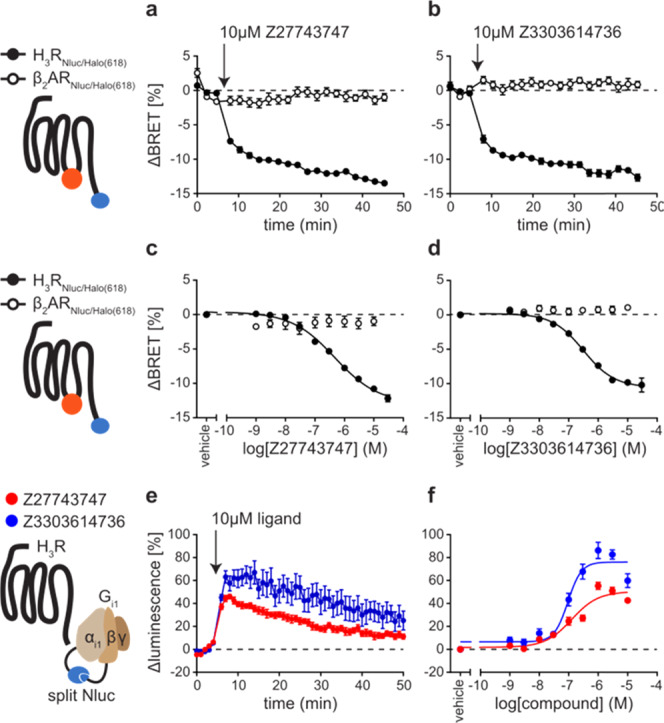Figure 4.

Characterization of new H3R inverse agonists. (a, b) ΔBRET time-course of Δicl3-H3RNluc/Halo(618) and β2ARNluc/Halo(618) upon addition of Z27743747 (a) and Z3303614736 (b). (c, d) Concentration–response curves of Z27743747 (c) and Z3303614736 (d) applied to cells expressing Δicl3-H3RNluc/Halo(618) or β2ARNluc/Halo(618). (e, f) ΔLuminescence time-course (e) and concentration–response (f) of the split Nluc-based G-protein sensor upon treatment with Z27743747 or Z3303614736. Experiments in (a)–(d) were conducted in HEK293 cells stably expressing either of the two conformational GPCR biosensors. Experiments in (e) and (f) were conducted in HEK293 cells transiently transfected with H3R wild-type and the split Nluc-based Gi1 sensor and pre-stimulated with 300 nM histamine (for 5 min before time point 0). Data show the mean ± SEM of at least three independent experiments.
